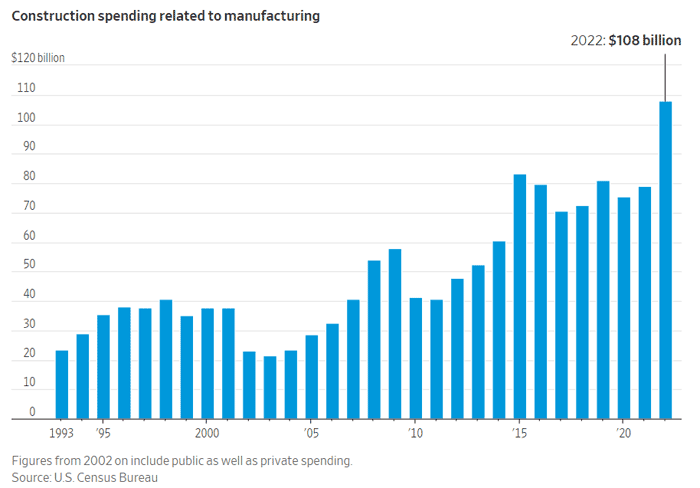A Look at the State of US Manufacturing
Are things looking up for US manufacturing?
That depends on how you look at it.
We all know the beating US manufacturing has taken primarily from China and other low cost countries over some three decades, really accelerating when China was allowed to enter the World Trade Organization in 2001
| GILMORE SAYS: |
WHAT DO YOU SAY?'
There appears to besome real green shoots seem to be growing, even if many are being fertilized with government money.
Send us your
Feedback here
|
The number of US factories and workers has in general been steadily decreasing since the 1980s. For example, US manufacturing employment peaked in 1980 at 19.5 million, according to Federal Reserve data. It is currently at about 13 million. That's quite a drop.
But hardly all of that is due to offshoring. Automation and process improvement are at least as responsible. I remember a number of years ago about a South Carolina textile plant that had re-opened a shuttered factory, and was making the same amount of product with about 200 employees versus 2000 in the 1980s.
But offshoring has taken its toll tool. Somewhere around 2007, the term "reshoring" entered the vernacular, referring to companies moving back to the US or deciding to keep production here.
There was much media coverage of the ideas. The problem: the evidence of such reshoring success was very anecdotal, with the stories of NCR in Atlanta, GE Appliance in Louisville (ironically now owned by a Chinese company), and a few others repeated over and over.
But a reshoring movement just never showed up in the data.
I remember a JC Penney supply chain executive made a comment along the lines of "offshoring went out like a tsunami and reshoring is coming back as a trickle." And that was about right.
The current index of US manufacturing output from the Federal Reserve stands at right about 100, right in with baseline line of the average month in 2017, when the index = 100.
So that means US manufacturing production is basically flat with that year - some six years later, hardly indicating some reshoring wave. As a note, the peak in the index was in late 2007, with a score of 107.
Many companies that looked at reshoring in previous years found it was much harder to pull out of China than they may have thought, in terms not only of cost but the ecosystem of suppliers.
But maybe, just maybe, there is a real reshoring movement starting. There are a couple of catalysts.
One, the severe supply chain disruptions coming out of China post-pandemic caused many companies to really question an "all China" sourcing strategy, especially when the tense geo-political situation is factored in.
Second, government subsidies to the semi-conductor and green energy sectors is having an impact.
Case in point: according to a recent article in the Wall Steet Journal, construction spending related to manufacturing reached $108 billion in 2022, Census Bureau data show, the highest annual total ever and well above 2021. (See graphic below).

Source: Wall Street Journal
That's hard data, not anecdotes, though the Journal notes even Lego is building its first US plant near Richmond, VA, after years of supplying the US from Mexico, to improve responsiveness.
In more good news, the US Bureau of Labor Statistics says that nearly 800,000 manufacturing jobs were added in the sector over the past two years.
There appears to besome real green shoots seem to be growing, even if many are being fertilized with government money.
So this time will reshoring really stick? The factory construction numbers look promising for sure, but let's wait for the numbers on manufacturing output to start validating the trend.
What is your reaction to this manufacting data? Let us know your thought at the Feedback section below.
|










